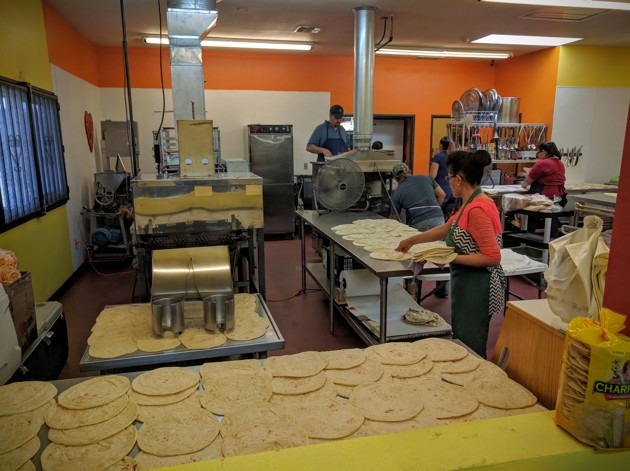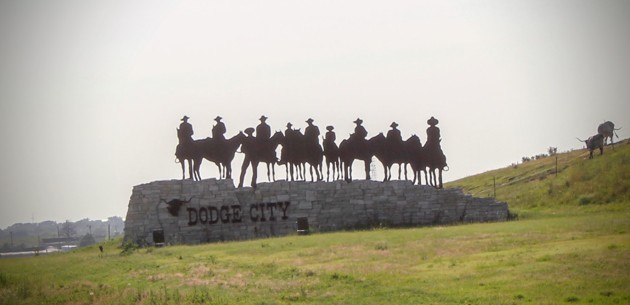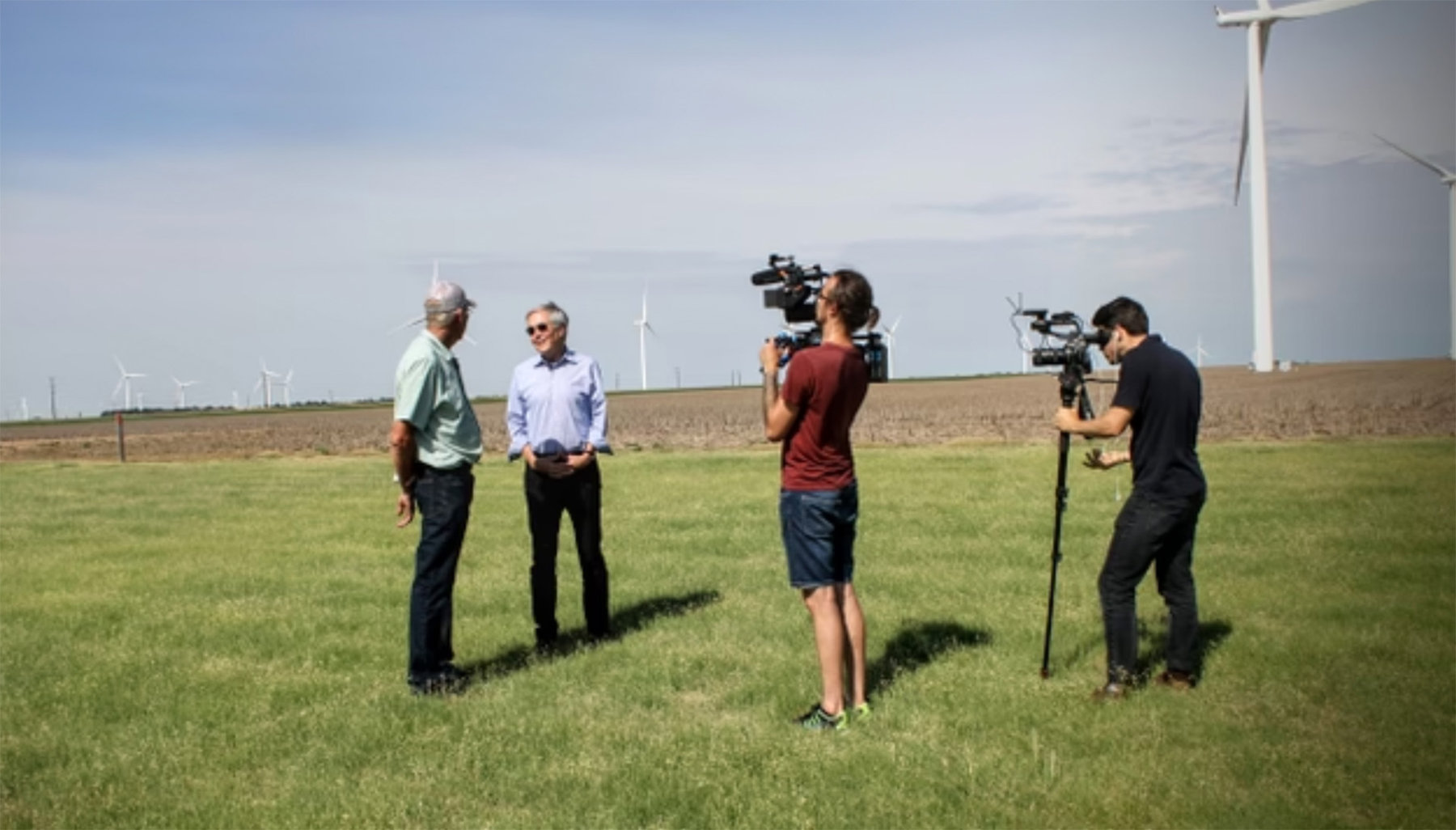For the past week my wife Deb and I have been in western Kansas — Dodge City mainly, also Garden City, briefly Spearville. There will be a lot more to report in coming days on the economic, cultural, and political news from this part of the country. What you see above is something that touches all of those themes: me talking with Kevin Heeke, the mayor of Spearville, about the hundreds of wind turbines that have transformed the economy of the wheat- and corn-farming regions in this extremely windy part of the country.
But I can’t let this day end without noting the black-versus-white, night-versus-day contrast between the way immigration, especially from Mexico and other parts of Latin America, is discussed in this part of the country where it is actually happening, versus its role in this moment’s national political discussion.
These cities of western Kansas, Dodge City and Garden City, are both now majority-Latino. People from Mexico are the biggest single immigrant group, and they are here mainly for work in the area’s big meat-packing plants. Others are from Guatemala, El Salvador, Honduras, Cuba, and more recently Somalia and Sudan, among other countries. You might think of Kansas as stereotypical whitebread America. It’s pure America, all right — but American in the truest sense, comprising people who have come from various corners of the world to improve their fortunes.
Every single person we’ve met here — Anglo and Latino, African and Burmese and other, old and young, native-born and immigrant, male and female, well-educated and barely literate, working three jobs and retired and still in school—of all these people, we’ve asked the same questions. Namely: how has Kansas handled this shift in demography? And how does it sound, in this politically and culturally conservative part of the country, to hear the national discussion about “building a wall,” about making America “a real country again,” of the presumptive Republican nominee saying even today that Americans are “angry over borders, they’re angry over people coming into the country and taking over, nobody even knows who they are.”
And every single person we have spoken with — Anglo and Latino and other, old and young, native-born and immigrant, and so on down the list — every one of them has said: We need each other! There is work in this community that we all need to do. We can choose to embrace the world, or we can fade and die. And we choose to embrace it. (The unemployment rate in this area, by the way, is under 3 percent, and every business we’ve talked with has “help wanted” notices out.)
This is in small-town western Kansas. And it is what we have heard in every discussion. I could give 50 examples, and eventually will, but here is one for now. A white man who grew up in this area, and works in construction, told us a few days ago: I wasn’t sure about the change in town. It’s different. But these people want to work. They want a better life for their children. We need them. Without them, we would shrivel up.
The details and the profiles and the specific extended quotes will follow. For today I just want to register: if you came to a part of America that had undergone some of the most profound recent ethnic change, and that was by inclination in no way trendily progressive, you would find Americans responding the way your best idea of America would suggest: inclusive, embracing, assessing newcomers on their character and behavior rather than on the categories to which they might be assigned (of course with the strains and tensions social change always brings).
This is worth noting at a time when it would be easy to assume that Americans in general were fearful, close-minded, and ready to reject those who were different in any way.

I can barely express how strongly I wish that anyone writing or opining about American “nativism” or “resentment” could come to a place like this, and see real Americans of many backgrounds responding to real demographic change. We are better, still truer to ourselves, than some of our politics now suggests.





